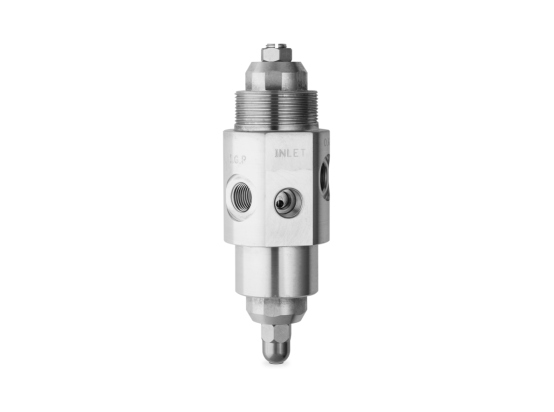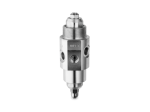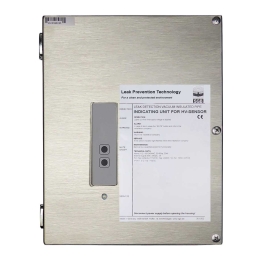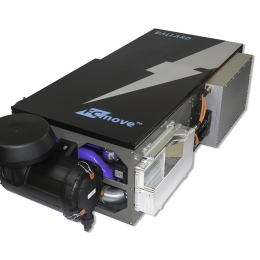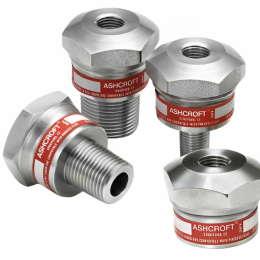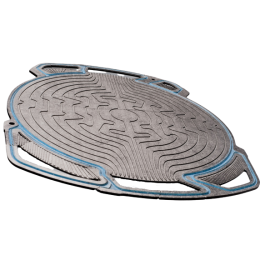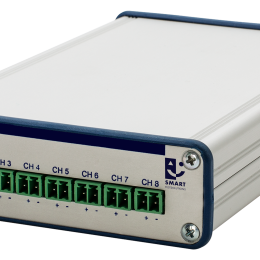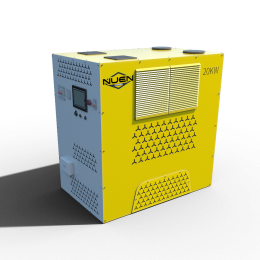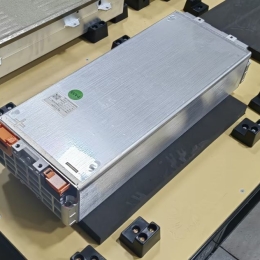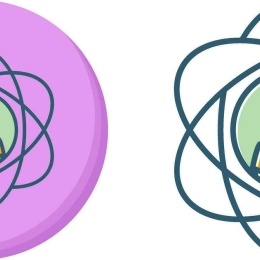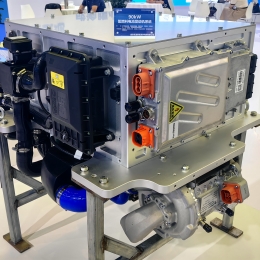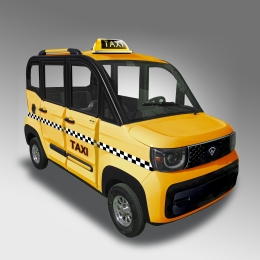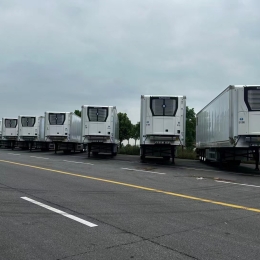Hydrogen Fuel Cell Pressure Regulator - LW-TS414
Pressure Tech Ltd- The LW-TS414 is a lightweight, two-stage piston sensed hydrogen fuel cell pressure regulator, providing stable pressure control under decaying inlet conditions.
- The first stage of the regulator uses a PCTFE seat for up to 300 bar (4,350 psi) inlet pressure or a PEEK™ for up to 414 bar (6,000 psi) inlet pressure and is preset at the factory and locked to prevent alteration.
- The second stage of the regulator, with a PCTFE seat as standard, can be adjusted by the user between various outlet pressures with the selected range
- 0.04% decaying pressure effect offers stable pressure control under varying inlet conditions
Hydrogen fuel cell pressure regulator - LW-TS414
- The LW-TS414 is a lightweight, two-stage piston sensed regulator, providing stable pressure control under decaying inlet conditions.
- The first stage of the regulator uses a PCTFE seat for up to 300 bar (4,350 psi) inlet pressure or a PEEK™ for up to 414 bar (6,000 psi) inlet pressure and is preset at the factory and locked to prevent alteration.
- The second stage of the regulator, with a PCTFE seat as standard, can be adjusted by the user between various outlet pressures with the selected range
Key components
Key Components of the LW-TS414 and its materials are listed as below:
- Body and Bonnet: Material used is Aluminium T6511 (UNS AW6082)
- Main Valve Pin: Material used is ASTM A479 316/316L Stainless Steel (UNS S31600/S31603)
- First Stage Seat: Material used is PCTFE (Kel-F) (max. inlet 300 bar / 4,350 psi) and PEEK™ (max. inlet 414 bar / 6,000 psi)
- Second stage Seat: Material used is PCTFE (Kel-F)
- Valve Spring: Material used is Inconel® X750 (UNS N07750)
- Piston: Material used is ASTM A479 316/316L Stainless Steel (UNS S31600/S31603)
- O-Rings: Material used is FKM/FPM (Viton)
- Loading Spring: Material used is ASTM A240 301 Stainless Steel (UNS S30100)
Features
- Two-stage design for accurate pressure control
- 0.04% decaying pressure effect offers stable pressure control under varying inlet conditions
- Solid disk seat design
- Lightweight design with Aluminium body
Benefits
Product features is correlated with the advantages of products as listed below:
- Two-stage Design: Accurate pressure control through two-stages of pressure reduction
- 0.04% Decaying pressure effect: Stable pressure control under varying inlet conditions.
- Solid Disk Seat Design: Perfect Perfect for use in aggressive or harsh conditions challenging conditions.
- Lightweight Design: Aluminium body provides users with a lightweight pressure control solution.
Application Areas
- Hydrogen fuel cell vehicles
Contact us!
- Contact us and tell us about your requirements. Our team help you with the suitable pressure regulators for your systems
| Brand | Pressure Tech |
| Max Inlet Pressure (bar) | 414 |
Pressure Tech is a UK manufacturer and was established in 2000 by owner Steve Yorke-Robinson. We are now renowned world over for the manufacture of high-quality pressure regulators. In 2017 we started work on expanding our product range into the Hydrogen Fuel Cell market with the development of our lightweight LW351 pressure regulator for UAV H2FC drones. We have since added an EC79 approved regulator for Hydrogen buses and trucks, a TPED approved cylinder valve for Hydrogen gas cylinders and a full range of pressure regulators for material handling applications, passenger vehicles and refuelling stations.

